#BIMModelingServices
Explore tagged Tumblr posts
Text
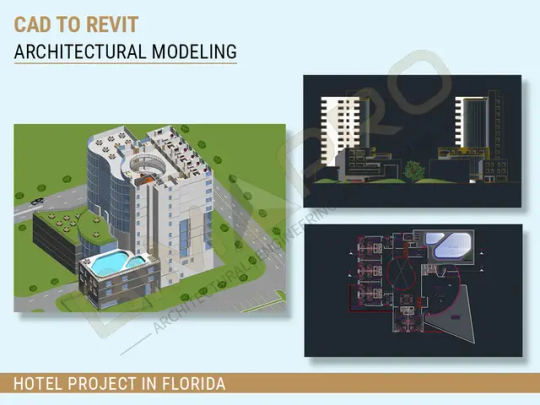
CAD to Revit Modeling Services for Hotel Project in Florida
Provided detailed CAD to Revit 3D architectural modeling services for an existing CAD design of a hotel project in Orlando, Florida.
1 note
·
View note
Text
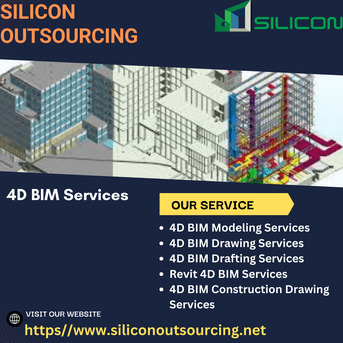
🚀 Transform Your Projects with Superior 4D BIM Services in NYC! 🏙️
At Silicon Outsourcing, we redefine construction planning with our cutting-edge 4D BIM Services. 🎯 From 4D Planning BIM to BIM Shop Drawings and 4D Modeling Services, we ensure seamless project coordination and scheduling. 📅✨
💡 Our expertise in Architectural BIM, Structural BIM, and Building Infrastructure Modeling helps you visualize every project phase while optimizing time and resources. ⏳💰
🌟 Why Choose Us? 🔹 Detailed 4D schedules & 3D modeling 📊 🔹 Enhanced resource management 🔄 🔹 Cost-effective & timely solutions ⏱️💸
📌 Our Services: 📐 4D BIM Modeling Services 🖊️ 4D BIM Drawing Services 📋 4D BIM Drafting Services 🛠️ Revit 4D BIM Services 🏗️ 4D BIM Construction Drawing Services
💬 Contact Us Today to bring innovation to your construction projects! Visit our website or email us for more details. 🌐✉️
Visit Our Website: https://www.siliconoutsourcing.net/cad-engineering-services/4d-bim-services.html
#4DBIMServices#4DBIMOutsourcing#BIMModelingServices#BIMShopDrawings#4DPlanningBIM#ArchitecturalBIM#StructuralBIM#BuildingInfrastructureModeling#4DCADServices#OutsourcingBIMServices
2 notes
·
View notes
Text
BIM Engineering Design and Drafting Services

Steel Construction Detailing is leading the top-notch quality of BIM Engineering Outsourcing Services. Our experts integrate time scheduling into your BIM model, allowing you to visualize the construction sequence and optimize project scheduling. Our BIM Engineering Detailing Services ensure accurate and detailed models, helping you visualize every aspect of your project. Our services include 3D modeling, clash detection, quantity takeoff, and construction documentation. With our BIM Engineering Design and Drafting Services, you can ensure that every project component is meticulously designed and documented. Get in Touch with the US for your upcoming BIM Engineering CAD Services. OUR BIM SERVICES INCLUDES : - Architectural BIM Services - Structural BIM Services - MEP BIM Services - BIM Clash Detection Services - Point Cloud to BIM Services - COBie Services Website :
ArchitecturalBIMServices
#Revit3DModelingServices#ArchitecturalBIMServices#StructuralBIMServices#MEPBIMServices#BIMServicesProvider#BIMModelingServices#StructuralBIMModelers#BIMOutsourcingCompany#5DBIMServices#OutsourceBIMEngineeringServices#BIMEngineeringOutsourcingServices#BIMEngineeringDesignandDraftingServices#CADServices#SteelCAD
1 note
·
View note
Text
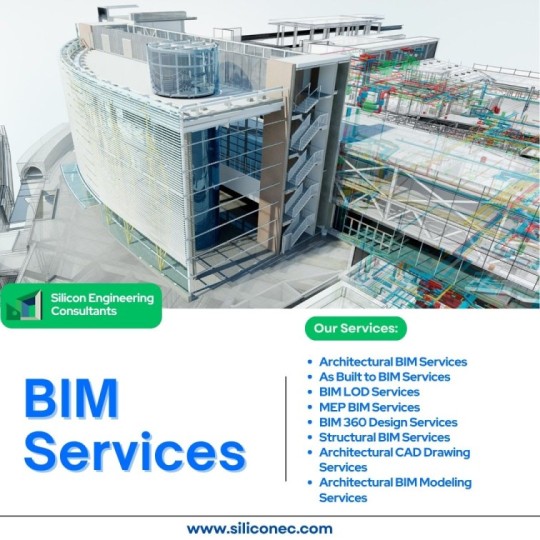
New York projects demand speed & precision. Silicon Engineering Consultants delivers structural & architectural BIM services for efficient collaboration, clash-free models, and confident planning. Move your project forward reliably.
Visit Us:
#Structural3DModeling#SchematicDesignDocumentation#StructuralDraftingandDetailing#Revit3DModeling#AsBuiltModelingandDrawing#StructuralBIMDesignandDraftingServices#StructuralBIMCADServices#BIMModelingServices#StructuralBIMModelingServices#StructuralBIMEngineeringServices
1 note
·
View note
Text
📐 Transform Your Construction Projects with Advanced BIM Services!
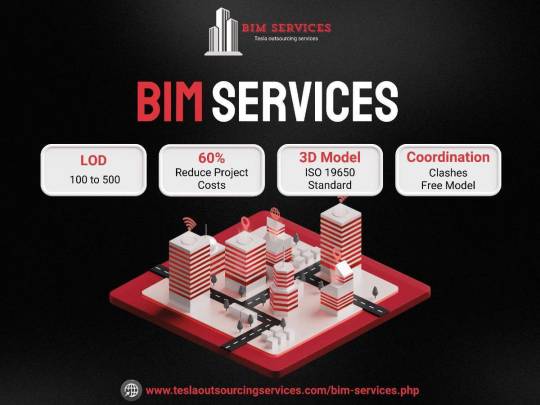
Simplify your construction planning and execution with Tesla Outsourcing Services! Our professional BIM Services help reduce errors, minimize costs, and improve collaboration throughout the project lifecycle. From BIM Modeling Services to complete BIM Outsourcing Services, we offer everything you need to succeed.
✔️ Improve project accuracy with expert BIM Modelling Services.
✔️ Cut costs and save time with flexible BIM Outsourcing Services.
✔️ Partner with experienced BIM Service Providers for reliable results.
✔️ Access specialized BIM Services USA customized for your project needs.
✔️ Get high-quality BIM Modelling Services USA for design, construction, and management.
Ready to enhance your project efficiency? Explore our complete range of BIM Services.
#BIMServices#BIMModelingServices#BIMModellingServices#BIMOutsourcingServices#BIMServiceProviders#BIMServicesUSA#BIMModellingServicesUSA
0 notes
Text
Boost Project Efficiency with Expert BIM Modeling Services 🏗️

Take control of your construction workflows with high-precision BIM Modeling Services from BIM Services India. Our solutions support smarter planning, seamless coordination, and timely delivery across every stage of the project.
Reliable BIM Company trusted by global AEC clients
Tailored 3D BIM Modeling Services for accurate digital representations
Integrated 4D BIM Scheduling Services for real-time progress tracking
Scalable BIM Modeling Services that align with your project goals
Partner with BIM Services India to bring greater clarity and efficiency to your next project.
#BIMModelingServices#3DBIMModelingServices#4DBIMSchedulingServices#BIMCompany#ConstructionTechnology#AECInnovation#DigitalConstruction
0 notes
Text
Optimize Construction with Accurate BIM Modeling Services

Transform your construction projects with accurate BIM modeling. Improve design precision, reduce risks, and save time to keep your projects on schedule and within budget.
0 notes
Text

BIM revolutionizes MEP contracting by enhancing collaboration, accuracy, and efficiency. It enables stakeholders to detect design clashes early, reducing costly rework. With precise 3D modeling and scan to BIM services, MEP contractors can seamlessly integrate new designs with existing structures. BIM streamlines workflows, optimizes resource allocation, and minimizes material waste, leading to significant cost savings. Beyond construction, BIM supports efficient facility management with detailed digital models. ADSBIM delivers tailored BIM solutions globally, offering expertise in MEP BIM, scan to BIM, and consulting services to help contractors achieve exceptional project outcomes.
#reliablebimandcadserviceprovider#bimservicesindia#bimmodelingservices#bimservicesllc#architecturalbimservices#bimmodelingandcoordinationservices#bimservicescompany#bimmodelingservicesindiadelhi#bimmodelingservicesindiagurgaon#scantobimservices#hdbimservices#bimservicesindiareviews
0 notes
Text
BIM Family Creation Engineering Services

Our BIM Family Creation Services offer custom, highly detailed 3D models tailored to your specific needs. Whether you're an architect, contractor, or engineer, we provide the perfect solution to integrate data-rich BIM content into your designs. - Enhance project collaboration - Improve design accuracy - Streamline workflows and save time Associate with Silicon EC UK and elevate your BIM designs! More Info Visit Here : https://siliconec.co.uk/bim-services/bim-family-creation.html
#BIMModeling#BIMContentCreation#BIMModelingServices#familycreation#BIMFamilyCreationServices#CADServices#SiliconECUK
1 note
·
View note
Text
3D Laser Scanning – Types | Benefits | Applications

3D Laser Scanning
3D laser scanning techniques have been developed since the end of 1990s for 3D digital measurement, documentation and visualization in several fields including 3D design in processing industry, documentation and surveying in architecture and infrastructure. By using a 3D laser scanner, a tunnel or underground construction can be digitized in 3D with a fast-scanning speed and high resolution up to “mm” level.
The scanning data consists of not only XY-Z co-ordinates but also high-resolution images, either gray-scale (with reflex intensity data) or color (with RGB data), and then can be transformed into a global co-ordinate system by control survey. Therefore, any rock engineering objects with its as-built situation can be quickly recorded as the 3D digital and visual format in a real co-ordinate system and provides a potential application for 3D measurement, documentation and visualization with high resolution and accuracy.
In modern engineering the term ‘laser scanning’ meaning is the controlled steering of laser beams followed by a distance measurement at every direction. This method, often called 3D object scanning or 3D laser scanning, is used to rapidly capture shapes of objects, buildings, and landscapes.
What is 3D Laser Scanning?
3D laser scanning is a non-destructive, non-contact method of capturing data that can be used for rapid and accurate creation of three-dimensional files, for archiving and digital manipulation. A 3D laser scanner emits a narrow laser beam that hits a target object, gathering millions of closely spaced measurements in a matter of minutes. These scanned measurements are put together and grouped into compressed point cloud databases, which can be processed to generate a 3D dense representation of the object.
3D Scanners Bridging Physical and Digital Worlds
3D scanners are tri-dimensional measurement devices used to capture real-world objects or environments so that they can be remodeled or analyzed in the digital world. The latest generation of 3D scanners do not require contact with the physical object being captured.
3D scanners can be used to get complete or partial 3D measurements of any physical object. The majority of these devices generate points or measures of extremely high density when compared to traditional “point-by-point” measurement devices.
How 3D Scanning Works?
Scanning results are represented using free-form, unstructured three-dimensional data, usually in the form of a point cloud or a triangle mesh. Certain types of scanners also acquire color information for applications where this is important. Images/scans are brought into a common reference system, where data is merged into a complete model. This process — called alignment or registration — can be performed during the scan itself or as a post-processing step.
Computer software can be used to clean up the scan data, filling holes, correcting errors and improving data quality. The resulting triangle mesh is typically exported as an STL (STereoLithography or Standard Tessellation Language) file or converted to Non-uniform Rational B-Spline (NURBS) surfaces for CAD and BIM modeling.
Types of Laser Scanning
1. Airborne Laser Scanning (LiDAR)
Airborne laser scanning (LiDAR = acronym for ‘Light detection and Ranging’, also LIDAR) is a scanning technique for capturing data on the features of, and objects on, the surface of the earth. It is an important data source in environmental studies, since it is capable of mapping topographic height and the height of objects on the surface to a significant vertical and horizontal accuracy, and over large areas. Airborne laser scanning is an active remote sensing technology able to rapidly collect data from vast areas.
2. Terrestrial Laser Scanning
Terrestrial Laser Scanners (TLS) are positioned directly on the ground, or on a platform placed on the ground, and are normally mounted on a tripod. TLS is, in its essence, an improved version of the laser tachometric measurement toolkit (the so-called total station) that is based on the combination of distances and angles measured from a fixed point. Tachometric laser scanners digitize objects of interest with a frequency of 1000 Hz or higher. Each point is measured per one oblique distance and, additionally, two orthogonal angles are measured. Most TLS are long-range devices. Nowadays, a great variety of TLS is available with different range and pulse frequencies.
3. Handheld (portable) Laser Scanning
There has recently been an increase in the application of handheld scanners. Their basic advantage is their portability. Scanners that are attached to light portable stands fall in this category as well, even though they are not ‘handheld’ in the true sense of the word. Primary used in reverse engineering, nowadays they are very often employed in digital documentation of moveable cultural heritage objects.
4. Long- and Short-Range Laser Scanning
Long-range laser scanning is tailored for surveying and monitoring expansive areas or structures. Using high-powered lasers and advanced optics, it covers distances from yards to miles/meters to kilometers. Employing time-of-flight or phase-based technologies, it finds applications in geological surveys, urban planning, infrastructure monitoring, and archaeological site mapping. Short-range laser scanning focuses on high-precision tasks within confined spaces. Covering distances from centimeters to meters/ feet to yards, it utilizes structured light or laser triangulation. Widely used in industrial metrology, 3D scanning, quality control, and cultural heritage preservation, it excels in capturing fine details with accuracy.
3D Scanning File Formats
TZF: This format is a Trimble scan files in a zipper format. The software exports the current project as a folder with:
• One TZF format file per station • One TCF format file per station if the station has been acquired with images
E57: This format is a file format specified by the ASTM (American Society of Testing and Materials), an international standards organization. The E57 format supports two types of data: Gridded Data and Non-Gridded Data. Gridded Data is a data which aligned in regular arrays.
E57 Gridded Files: The software exports the current project as one LAS 1.2 format file.
E57 Non-Gridded Files: The software exports the current project as one LAS 1.2 format file.
PTX: This format is an ASCII based for scan file format. The software exports the current project as one LAS 1.2 format file.
LAS, Non-Gridded: The format is public file format for interchanging 3-dimensional point cloud data between users. It is binary-based and has several versions: 1.0, 1.1, 1.2, 1.3 and 1.4. The application exports the current project as one LAS 1.2 format files.
POD, Non-Gridded: The POD (Point Database) file format is Bently Pointools’ native point cloud format. The software exports the current project as one POD format file. Points, color, intensity and normal (if available) information are exported.
RCP: This format file is a project file for Recap from Autodesk. The software exports the current project as one RCP format file.
TDX: TDX is Trimble Data eXchange file format, commonly used in some Trimble software applications like TBC (Trimble Business Center) or RealWorks. The software exports the information listed below:
• Stations with registration sets • Created panorama(s) • Measured points • Leveling information
Benefits of 3D Laser Scanning
3D laser scanning has become an indispensable tool across many industries due to its ability to capture highly detailed and more accurate 3D data. Here are some of the key benefits of 3D laser scanning:
High Accuracy
Laser scanning provides extremely accurate measurements, making it effective for applications where precision is critical, such as engineering, construction, and product manufacturing.
Rapid Data Capture
Laser scanners can quickly collect a large amount of data, reducing the risk associated with scanning high buildings and improving field staff safety.
Non-contact Technology
Laser scanning is noninvasive and doesn’t require physical contact with the object or environment being scanned, making it ideal for fragile, hazardous, or hard-to-reach locations.
Comprehensive Documentation
Laser scanning creates detailed and comprehensive digital records of objects, buildings, or landscapes, which are invaluable for preservation and historical archiving.
Visualization
Data from 3D laser scans can be used to create highly realistic visualizations, aiding in the design, analysis, and communication of complex structures and spaces.
Clash Detection
When integrated with building information modeling (BIM), laser scanning helps identify clashes between design plans and existing structures, reducing costly construction errors.
Applications of 3D Laser Scanning
3D Laser Scanning is used in numerous applications: Industrial, architectural, civil surveying, urban topography, reverse engineering, and mechanical dimensional inspection are just a few of the versatile applications. 3D laser scanning technology allows for high resolution and dramatically faster 3D digitizing over other conventional metrology technologies and techniques. Some very exciting applications are animation and virtual reality applications.
1. Construction Industry and Civil Engineering
a. As-built drawings of bridges, industrial plants and monuments b. Documentation of historical sites c. Site modelling and lay outing d. Quality control e. Quantity surveys f. Freeway redesign g. Establishing a benchmark of prre-existing shape/state in order to detect structural changes resulting from exposure to extreme loadings such as earthquake, vessel/truck impact or fire. h. Create GIS (Geographic Information System) maps and Geomatics
2. Reverse Engineering
Reverse Engineering refers to the ability to reproduce the shape of an existing object. It is based on creating a digitized version of objects or surfaces, which can later be turned into molds or dies. It is a very common procedure, which has diverse applications in various industries. Non- contact 3D laser scanning allows even malleable objects to be scanned in a matter of minutes without compression, which could change their dimensions or damage to their surfaces. Parts and models of all sizes and shapes can be quickly and accurately captured. 3D laser scanning for reverse engineering provides excellent accuracies and helps to get products to market quicker and with less development and engineering costs. 3D Laser scanning provides the fast, accurate, and automated way to acquire 3D digital data and a CAD and BIM model of part’s geometry for reverse engineering when none is available. Also, new features and updates can be integrated into old parts once the modeling is accomplished. A practical mechanical and civil engineering application would be to assist in the production of "as built" data and documentation. Currently, many manufacturing or construction activities are documented after the actual assembly of a machine or civil project by a designer or engineering professional. 3D laser scanners could expedite this activity to reduce man-hours required to fully document an installation for legacy.
3. Mechanical Applications
Reverse engineering of a mechanical component requires a precise digital model of the objects to be reproduced. Rather than a set of points a precise digital model can be represented by a polygon mesh, a set of flat or curved NURBS surfaces, or ideally for mechanical components, a CAD solid model. A 3D scanner can be used to digitize free-form or gradually changing shaped components as well as prismatic geometries whereas a coordinate measuring machine is usually used only to determine simple dimensions of a highly prismatic model. These data points are then processed to create a usable digital model, usually using specialized reverse engineering software.
4. Civil Applications
Civil activities could be for a roadway periodic inspection. The digitized roadway data could be contrasted to previous roadway 3D scans to predict rate of deterioration. This data could be very helpful in estimating roadway repair or replacement costing information. When personnel accessibility and/or safety concerns prevent a standard survey, 3D laser scanning could provide an excellent alternative. 3D Laser scanning has been used to perform accurate and efficient as-built surveys and before-and after construction and leveling survey.
5. Design Process
Design process including: a. Increasing accuracy working with complex parts and shapes b. Coordinating product design using parts from multiple sources c. Updating old CD scans with those from more current technology d. Replacing missing or older parts e. Creating cost savings by allowing as-built design services, for example: automotive manufacturing plants. f. “Bringing the plant to the engineers” with web shared scan and saving travel costs.
Conclusion
3D laser scanning equipment senses the shape of an object and collects data that defines the location of the object’s outer surface. This distinct technology has found applications in many industries including discrete and process manufacturing, utilities, construction. Laser scanning technology has matured and developed in the past two decades to become a leading surveying technology for the acquisition of spatial information.
The high-quality data produced by laser scanners are now used in many of surveying’s specialty fields, including topographic, environmental, and industrial. These data include raw, processed, and edited dense point clouds; digital terrain and surface models; 3D city models; railroad and power line models; and 3D documentation of cultural and historical landmarks. 3D laser scanners have a wide range of applications which applicable to very small object to a wide range area.
#3DLaserScanning#ScantoBIMservices#BIMModelingServices#AirborneLaserScanning#TerrestrialLaserScanning#LongRangeLaserScanning#ShortRangeLaserScanning#BIMServices#Benefitsof3DLaserScanning#Applicationsof3DLaserScanning
1 note
·
View note
Text

Revolutionize Your Construction Projects with 4D BIM Services in Arizona! 🏗️✨
At Silicon Outsourcing, we specialize in Innovative 4D BIM Services to elevate project planning, coordination, and scheduling. 🚀📅
✅ Expertise in 4D Planning BIM, BIM Shop Drawings, and 4D Modeling Services 🖊️🎥 ✅ Powered by top-tier tools like AutoCAD, Revit, Tekla Structures, Navisworks, & more 💻🔧 ✅ Covering Architectural BIM, Structural BIM, and Infrastructure Modeling for seamless workflows 🏢💡
We deliver detailed schedules & 3D visualizations to optimize resource management and minimize delays. ⏳✅ Let’s streamline your construction journey with timely and cost-effective solutions tailored to your needs! 🌍🤝
📩 Get in touch today to transform your projects!
Visit Our Website:
#4DBIMServices#4DBIMOutsourcing#BIMModelingServices#BIMShopDrawings#4DPlanningBIM#ArchitecturalBIM#StructuralBIM#BuildingInfrastructureModeling#4DCADServices#OutsourcingBIMServices
1 note
·
View note
Text
Structural BIM Services with Reasonable Prices in Sydney, Australia
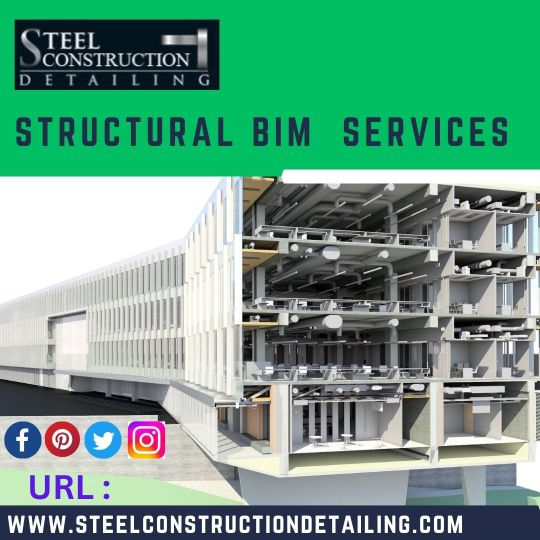
Steel Construction Detailing is providing top-notch quality of Structural BIM Engineering Outsourcing Services. Our team of experienced professionals specializes in Structural BIM Design and Drafting Services, ensuring that your project benefits from meticulous planning and detailing. This includes precise drawings, material specifications, and other essential details that streamline the implementation of the structural design. Whether you require modeling, detailing, or consultancy services, we provide a one-stop solution for ensuring the success of your Structural BIM CAD Services projects.
Strucutral BIM Services : - Structural Analysis - Structural Design - Design structural steel - Steel Structure Detailing - Clash Detection - Creation of 3D, 4D and 5D BIM services Website : https://www.steelconstructiondetailing.com/building-information-modeling/australia-building-information-modelling.html
#BIMModelingServices#FabricationShopDrawingServices#StructuralBIMShopDrawingServices#StructuralBIMDesigningServices#StructuralBIMDraftingServices#REVITStructuralBIMServices#REVITStructuralModelingServices#StructuralEngineeringCompany#StructuralBIMOutsourcingServices#CADServices#SteelCAD
1 note
·
View note
Text
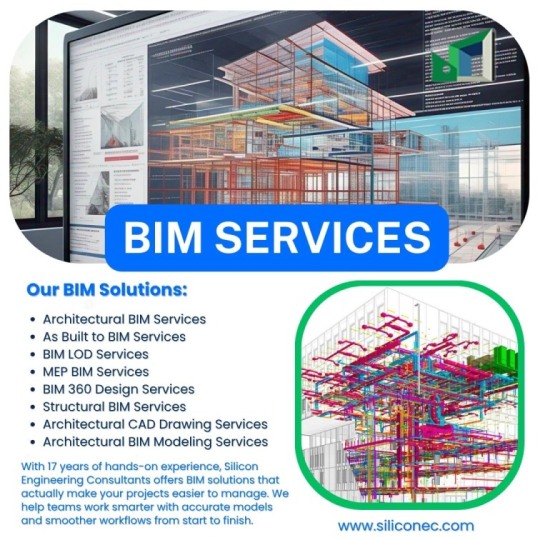
In Dallas, fast projects need smarter planning. Our BIM services help you stay aligned, avoid rework, and move forward with clarity. Silicon Engineering Consultants is here to support every step.
Visit Us:
#Structural3DModeling#SchematicDesignDocumentation#StructuralDraftingandDetailing#Revit3DModeling#AsBuiltModelingandDrawing#StructuralBIMDesignandDraftingServices#StructuralBIMCADServices#BIMModelingServices#StructuralBIMModelingServices#StructuralBIMEngineeringServices
1 note
·
View note
Text
Maximizing Efficiency and Precision with Structural MEP BIM Modeling Services: A Deep Dive
Introduction
In the ever-evolving landscape of the Architecture, Engineering, and Construction (AEC) industry, the need for precise, efficient, and integrated design solutions has never been greater. Structural MEP (Mechanical, Electrical, and Plumbing) modeling services have emerged as a pivotal technology to meet these demands. These services facilitate the seamless integration of critical building systems, ensuring that projects are executed with the highest levels of accuracy and efficiency. The AEC Associates, with their extensive expertise in Structural and MEP BIM modeling services, are at the forefront of this transformation, delivering innovative solutions that enhance project outcomes.

What Are Structural MEP Modeling Services?
Structural MEP modeling services involve the creation of detailed, three-dimensional representations of a building's mechanical, electrical, and plumbing systems integrated with its structural components. This holistic approach ensures that all building systems are cohesively designed, avoiding potential conflicts and ensuring optimal performance. The primary components of SMEP modeling include HVAC (Heating, Ventilation, and Air Conditioning), electrical systems, plumbing systems, and fire protection systems.
The integration of MEP systems with structural elements is crucial for maintaining the structural integrity of a building while ensuring that all essential services are efficiently routed and accessible. Technologies such as Autodesk Revit and AutoCAD MEP are widely used in this domain, providing powerful tools for creating accurate and comprehensive models.
Key Benefits of Structural MEP Modeling Services
Enhanced Coordination and Collaboration
One of the most significant advantages of Structural MEP modeling is the enhanced coordination and collaboration it facilitates. By integrating different building systems into a single, unified model, architects, engineers, and contractors can work together more effectively. This real-time collaboration ensures that all parties are on the same page, reducing misunderstandings and improving overall project coherence.
Improved Design Accuracy
Structural MEP models provide a detailed and precise representation of a building's systems, allowing for better planning and execution. These models help minimize design errors and inconsistencies, which are common in traditional 2D drawings. The ability to visualize and analyze complex systems in 3D ensures that potential issues are identified and addressed early in the design phase.
Cost and Time Efficiency
By reducing rework and construction delays, Structural MEP modeling services contribute significantly to cost and time efficiency. Accurate models allow for streamlined construction processes, as all components are clearly defined and coordinated. This leads to fewer on-site adjustments and a smoother workflow.
Risk Mitigation
Early identification and resolution of conflicts are critical for maintaining project timelines and budgets. Structural MEP models help mitigate risks by ensuring that all systems are properly integrated and compliant with building codes and standards. This proactive approach reduces the likelihood of costly changes during construction.
Applications of Structural MEP Modeling in Various Sectors
Commercial Buildings
In commercial buildings, MEP systems play a crucial role in creating comfortable and efficient environments. Structural MEP modeling ensures that these systems are optimally designed and integrated..
Healthcare Facilities
Healthcare facilities have unique MEP requirements due to the critical nature of their operations. Structural MEP modeling helps address these needs by ensuring that systems such as HVAC and plumbing are designed to meet stringent standards. Precise MEP modeling enhances the facility's functionality and safety through precise MEP modeling.
Educational Institutions
Creating efficient and safe learning environments is essential for educational institutions. Structural MEP modeling services ensure that schools and universities are equipped with well-coordinated systems that enhance the learning experience. Leading providers successfully apply these services in several educational projects, resulting in improved facility performance.
Industrial Plants
Industrial plants require robust MEP systems to support complex manufacturing processes. Structural MEP BIM modeling services address these needs by providing detailed, accurate models that ensure efficient system integration. Optimized MEP systems support high-performance operations.
The Implementation Process
Initial Assessment and Project Scope Definition
The first step in the implementation process is understanding the client's requirements and project goals.
Collaborative Design and Modeling
Integration of architectural and engineering designs is critical for successful MEP modeling. It involves working collaboratively with all parties to create cohesive and accurate models that reflect the project's vision.
Quality Assurance and Validation
Ensuring accuracy and adherence to standards is a key aspect of the implementation process. At this stage, providers employ rigorous quality assurance and validation procedures to guarantee that models are precise and compliant with industry standards.
Deliverables and Ongoing Support
The final step involves providing detailed models and continuous support during construction. Comprehensive deliverables are provided that facilitate smooth project execution and ongoing assistance to address any issues that may arise.
Challenges and Solutions in Structural MEP Modeling
Common challenges in Structural MEP modeling include data integration and coordination issues. Leading providers of SMEP modeling services overcome these challenges by employing best practices such as using interoperable software, maintaining clear communication channels, and implementing robust data management protocols.
Future Trends in Structural MEP Modeling
Emerging technologies such as Artificial Intelligence (AI) and the Internet of Things (IoT) are set to revolutionize MEP modeling. These advancements will enhance the accuracy and efficiency of MEP models, further driving the adoption of this technology in the AEC industry.
Conclusion
Structural MEP modeling services are essential for modern construction projects, offering numerous benefits such as enhanced coordination, improved design accuracy, cost and time efficiency, and risk mitigation. The AEC Associates are committed to delivering high-quality MEP BIM modeling solutions that meet the diverse needs of their clients. By leveraging these services, clients can ensure the success of their projects and achieve optimal outcomes.
0 notes
Text
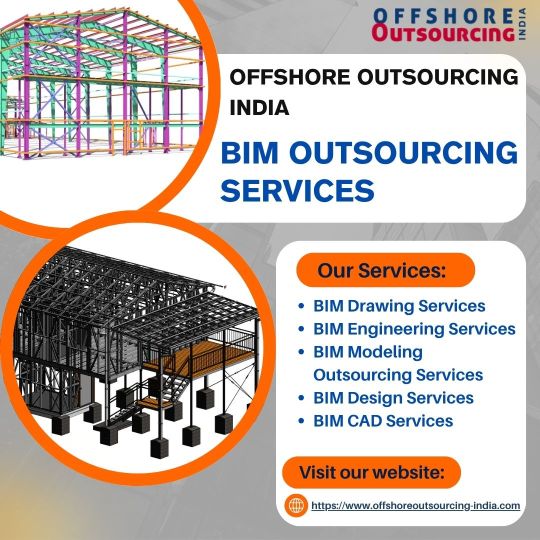
Reliable BIM Outsourcing Services in Auckland, NZ
Offshore Outsourcing India provides a wide range of BIM Outsourcing Services designed to support architects, engineers, and construction firms in managing their workloads effectively. Our BIM Services are tailored to meet the needs of various construction projects.
#BIMServices#BIMModelingServices#RevitDraftingServices#3DBIMModelingServices#RevitBIMServices#BIMCADServices#BIMDrawingServices#BIMEngineeringServices#RevitBIMModelingServices#BIMExperts#CADandBIMServices#BIMDesignServices#RevitModellingServices#BIMDesignConsultingServices#RevitDesignServices
0 notes
Text
The Integral Impact of MEPFP Design Documentation in CAD & BIM on Contemporary Educational Institutions
Top Architectural CAD and BIM documentation services like The AEC Associates perfectly understand the important role played by MEPFP (Mechanical, Electrical, Plumbing, and Fire Protection) design documentation in shaping modern learning environments in contemporary educational institutions. Architectural CAD and BIM design documentation assists designers in coming up with efficient and creative educational facilities through the design of various systems- from mechanical systems ensuring air quality to fire protection strategies for safety and electrical systems supporting technological integration to plumbing and sanitation for health and hygiene.
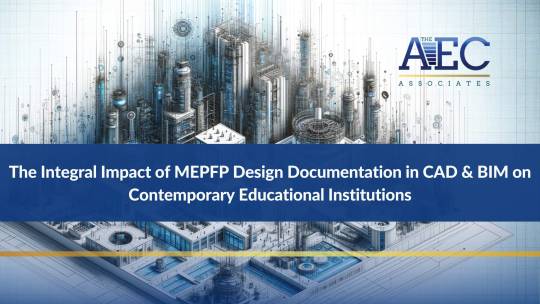
The importance of MEPFP in educational facilities:
MEPFP design documentation plays a pivotal role in creating educational spaces that are not only conducive to learning but also align with contemporary standards and sustainability goals. By integrating BIM Modeling Services, educational institutes can optimize their facilities for functionality, energy efficiency, and overall performance. Let’s have a look at how different aspects may help achieve this objective.
Mechanical systems for optimal air quality and temperature control
While designing mechanical systems, the emphasis is on creating an environment conducive to learning. HVAC (Heating, Ventilation, and Air-conditioning) systems are meticulously designed to provide optimal air quality and temperature control. BIM Modeling Services enable the visualization of these systems, facilitating precise planning and execution.
Electrical systems for advanced technological integration
In the digital age, technological integration is a key consideration in educational spaces. MEPFP design documentation ensures that electrical systems are not only robust but also adaptable to the evolving technological landscape. These systems, from smart classrooms to advanced audio-visual setups, are designed with safety, adaptability, and future-proofing in mind.
Plumbing and sanitation for health and hygiene
The health and well-being of students and staff are of paramount importance. MEPFP design documentation addresses plumbing and sanitation systems with a focus on promoting health and hygiene. From water efficiency to fixtures to sanitation facilities that adhere to the highest standards, these systems contribute to the overall well-being of the educational community.
Fire protection: Ensuring safety in educational spaces
Safety is a top priority in educational institutions, and fire protection is a critical component. CAD documentation helps accurately design an efficient layout and position of fixtures to ensure the safety of the users. MEPFP design documentation incorporates robust fire protection strategies that comply with regulations and codes. Architectural CAD and BIM services aid in simulating fire scenarios, allowing for identifying and rectifying potential vulnerabilities.
Advancements in technologies thus present a positive outlook on the evolution of MEPFP systems in the future that promises educational institutions efficient, adaptable, and vibrant learning environments.
MEPFP systems must adapt to the ever-evolving educational needs and requirements and technological advancements. The future outlook involves the integration of emerging technologies, such as the Internet of Things (IoT) for smart building management, which is ably facilitated by Architectural CAD and BIM Design Documentation through providing efficient MEPFP systems to enhance the efficiency and sustainability of educational facilities.
#cad#bim#bimmodeling#bimmodelingservices#bimservices#architecturebimservices#construction documentation services#architectural cad drafting#design documentation
0 notes